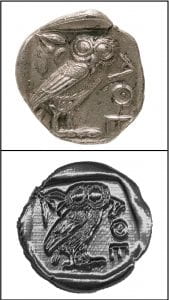
This project explores the use of 3D printed and replica objects in the teaching of introductory survey courses on the history of the ancient world. The goal is to use material objects to create multi-modal and authentic active learning experiences that allow students to apply historical and archaeological methods in the classroom and enhances the accessibility of course material for students of diverse backgrounds and learning needs. Learning modules are being developed around the incorporation of 3D objects in order to examine the efficacy of material exercises in historical learning. Learning modules already tested during in-person classes have focused on the decipherment and interpretation of ancient scripts and texts and the study of Greco-Roman coins (these modules can be found under Teaching). Additional learning modules are currently in development. Objects are also incorporated into daily lectures and class discussions in order to activate different modes of learning and to enrich conversations around topics such as looting, the loss of archaeological context, and threats to cultural heritage. Funding applications are in preparation to expand the project and develop an open education resource textbook that focuses on active learning in history courses, including the use of 3D printed objects.

A common critique of the study of ancient history is that it is often “institutional and exclusionary; still the stuff of galleries, museums and UNESCO World Heritage sites; of prized images, objects and structures, rather than of living humanity” (Wengrow Aeon 2018). The incorporation of replicas of objects predominantly housed in elite often overseas institutions like the British Museum or the Louvre reduces exclusionary barriers to learning, making the ancient world feel more relevant and accessible. More importantly, however, the use of replicas allows us to reconsider the choices we make in instructional design and the focus of our historical inquiry. The incorporation of objects of daily life can redirect the study of ancient cultures from the grandiose markers of “civilization” to the every-day world of living individuals. Ongoing module development will continue to focus on these every-day objects and the daily lives of average people in the ancient world.
